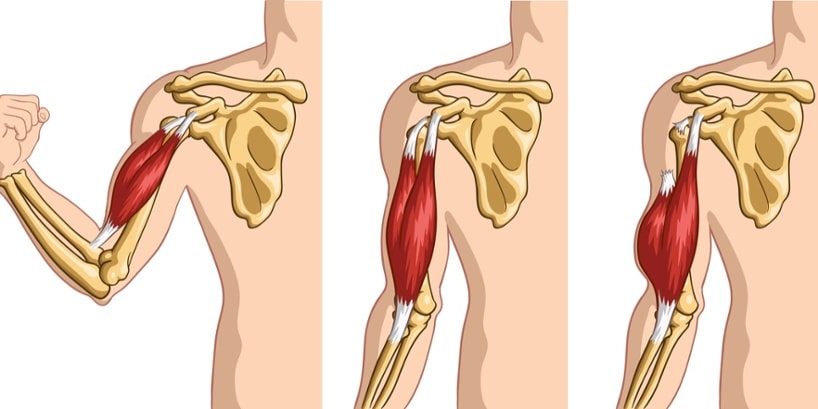When someone says the word “muscle” to you, what do you think of? Maybe the pecs, maybe the calves, but if someone were to ask you to flex your muscles, your go to muscle would be biceps brachii. Maybe because it is very visible, maybe because we’ve all seen what happens to Popeye after eating his spinach, but for some reason biceps brachii is the muscle we all think of when we think of muscles.
Here’s the thing though: We don’t really need our biceps.
Biceps brachii has three actions: it can flex the shoulder, it can flex the elbow, and it can supinate the forearm (turn your palm upwards). Well, we’ve got three other muscles that can flex the shoulder (pectoralis major, anterior deltoid, coracobrachialis). We’ve got two other powerful elbow flexors (brachialis and brachioradialis). And we have a muscle to supinate that’s actually named supinator (supinator). So what do we need this biceps for, anyway?

Looks good at the beach. Makes you look swole.
Does that mean if your plane is crashing and you need to jettison extra weight you should get rid of your biceps? As amusing as that sounds, no, that’s probably a bad idea. Your biceps does connect your torso to your forearm by originating on your scapula (at the supraglenoid tubercle and the coracoid process) and inserts just past your elbow on your forearm (at the radial tuberosity and the bicipital aponeurosis). This means that if you’re transferring force from your torso to your forearm, say like when you’re throwing a baseball, the biceps plays a key role in doing so.
So biceps is good for something. Great. But that doesn’t mean it’s perfect.
Since biceps is multiarticular (crosses two or more joints) it is susceptible to insufficiencies. It can become actively insufficient when it tries to perform all its actions at the same time. Imagine lifting a heavy weight by both flexing your elbow and your shoulder, versus just flexing your forearm. Basically the muscle becomes weaker when you take .
Biceps can also become passively insufficient when it is elongated across all of its joints at the same time, thereby limiting your range of motion.
But the one you’re probably most familiar with is bicipital tendonitis. Tendonitis, quite simply, is the inflammation of a tendon. Tendonitis can be caused by trauma, or it can be secondary to other pathologies (like arthritis), but most often it is caused by overuse. Too many repeated overhand motions. Athletes such as baseball players, tennis players and swimmers are all common recipients of bicipital tendonitis. And we can help with this!

Of course, initially, we treat this with ice and rest. Let the body heal itself. But in the later subacute stages of injury (about three weeks in) we can start massaging to help the healing process. This would involve releasing tension in the biceps, thereby lessening the tug of the muscle on its inflamed tendon, as well as cross-fiber frictioning to the tendon itself to bring extra blood flow, stimulate the healing process, and make it so the body lays down a nice, mobile bit of scar tissue that won’t limit the client’s range of motion once healing is complete. Follow this up with a stretch to the muscle and tendon (and it doesn’t have to be the most profound stretch in the world, just enough to lengthen the fibers) and an eccentric contraction (muscle contracts while lengthening) of the muscle to reset the muscle length. Follow with an ice massage to help control the localized inflammation you just creating with your frictioning, and have them come back twice a week for about four weeks. If there is no improvement after four weeks, they may need to revisit their doctor.
To learn this treatment and more, talk to someone from our admissions department right now by clicking here!


 GET STARTED
GET STARTED
